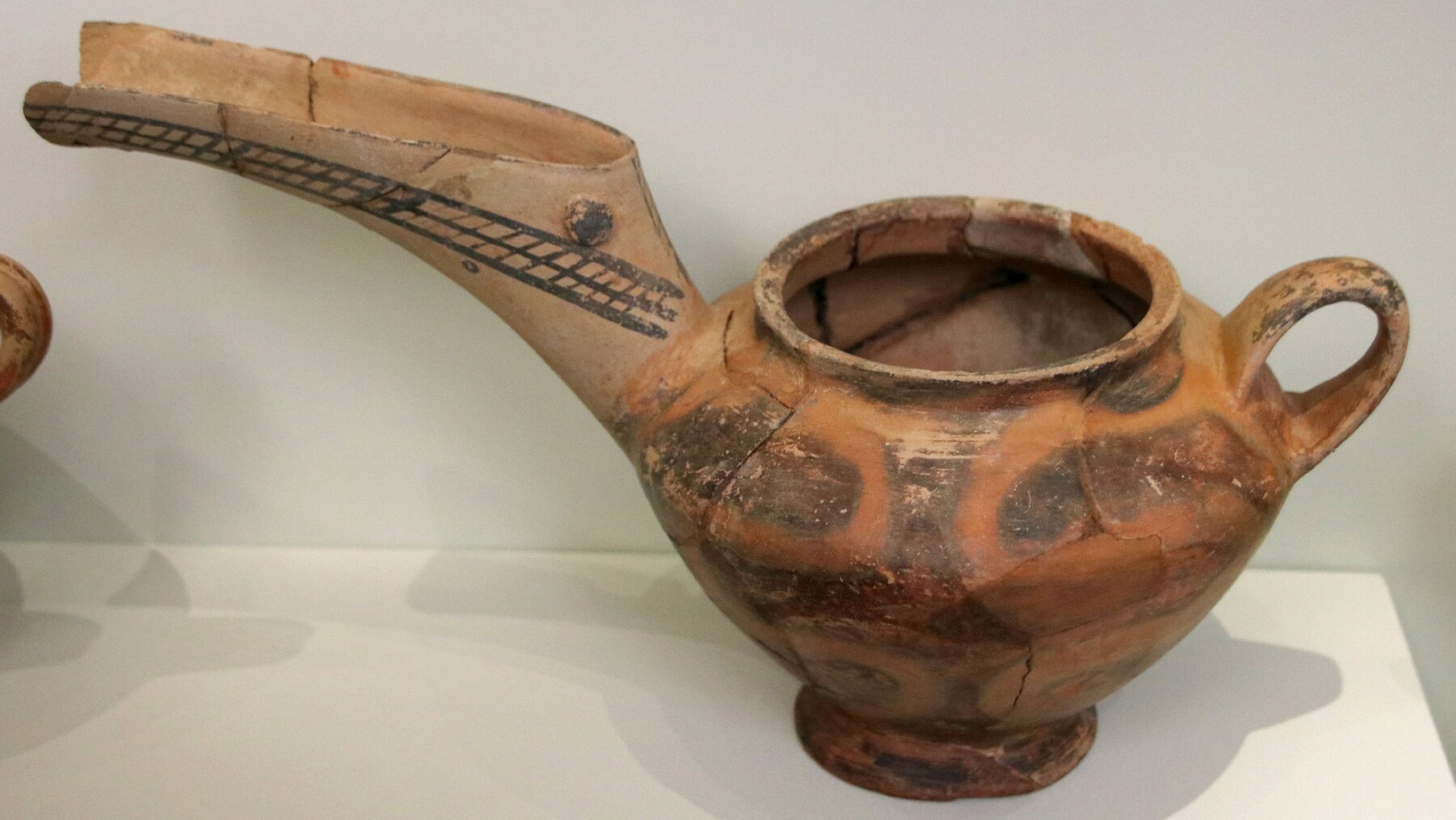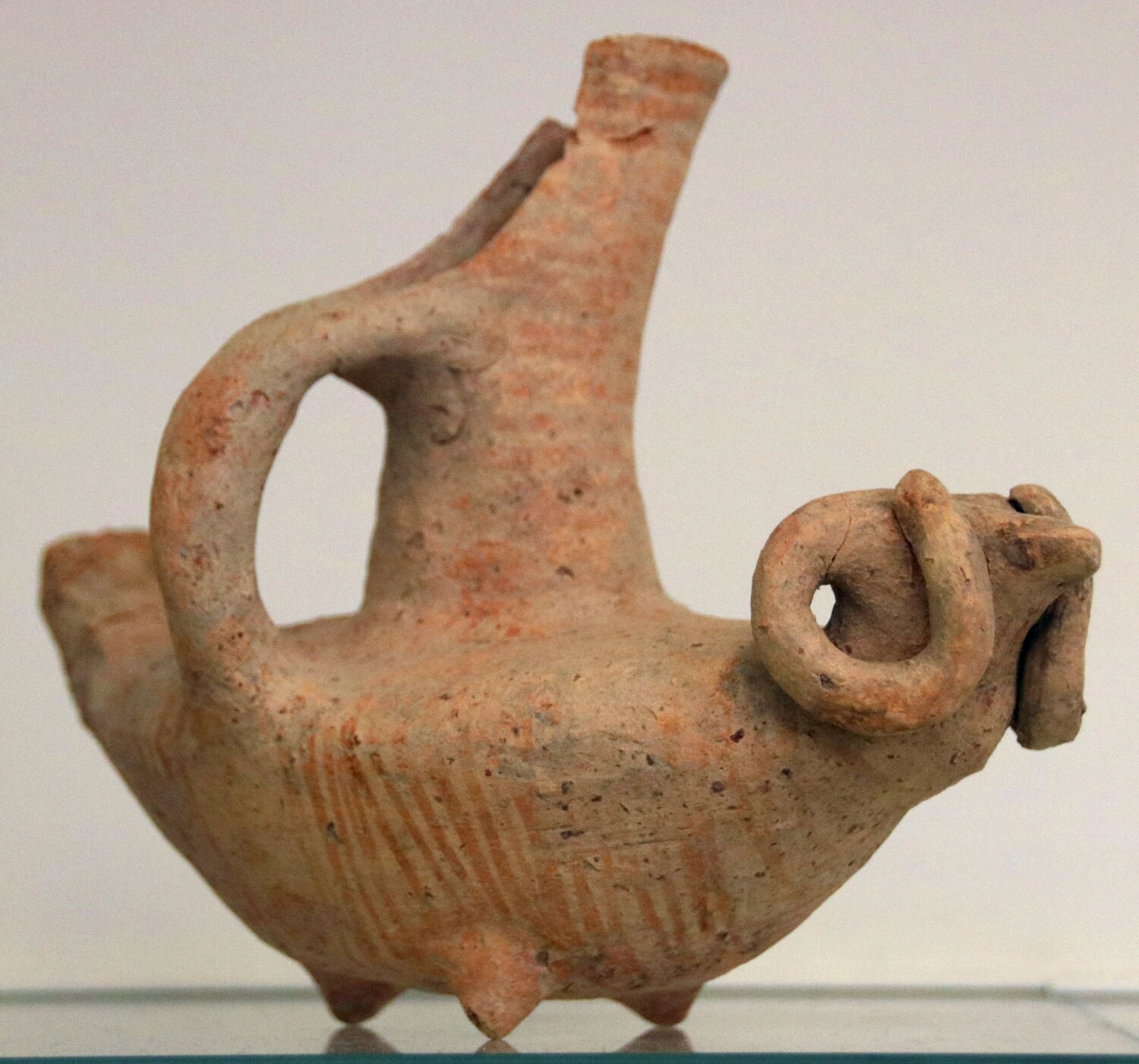After visiting the Palace of Knossos on Day 10, I returned to the city to go to the Heraklion Archaeological Museum. The museum features
the world's largest collection of Minoan artifacts, from the periods of Cretan prehistory and history covering 5,500 years, from the
Neolithic period to Roman times.
|

Above: In the Heraklion Archaeological Museum, a teapot with an exaggerated spout, from the ancient town of Vasiliki, 2400-2200 BC.
|
|
1 is an Hagios Onouphrios in a burial rock shelter from Kyparissi in Crete, 2600-1900 BC.
2 is a kernoi to collect offerings from Pyrgos, Santorini burial cave, 3000-2600 BC.
3 is a two-bodied ritual jug from Libena in Crete, 2600-2300 BC.
4 are clay worship figurines from Chamezi in Crete, 1900-1700 BC.
5 is a skull burial vessel from Archanes Phourni, 2100-1800 BC. The skull was detached from the body
after its dissolution and placed in the vessel, to signify its importance in human existence.
6 is a burial vessel from Hagia Triada, 1900-1700 BC.
7 is a double jug from Knossos, 1500-1450 BC.
8 is a bull headed rhyton holding libations, from Mochlos, 1500-1450 BC.
9 to 11 show the Phaistos Disc, with forty-five pictorial signs arranged in sixty-one groups with other Cretan scripts, early 17th century BC.
Experts have not been able to decipher the meaning of these scripts.
|

|
|